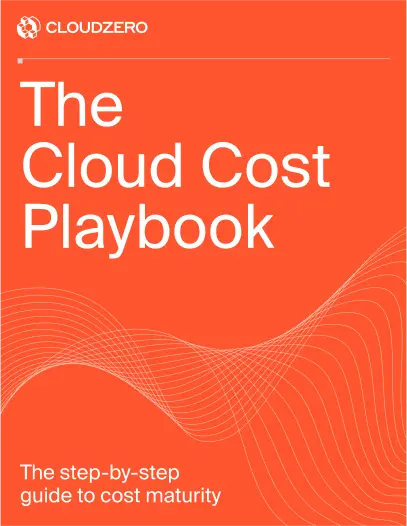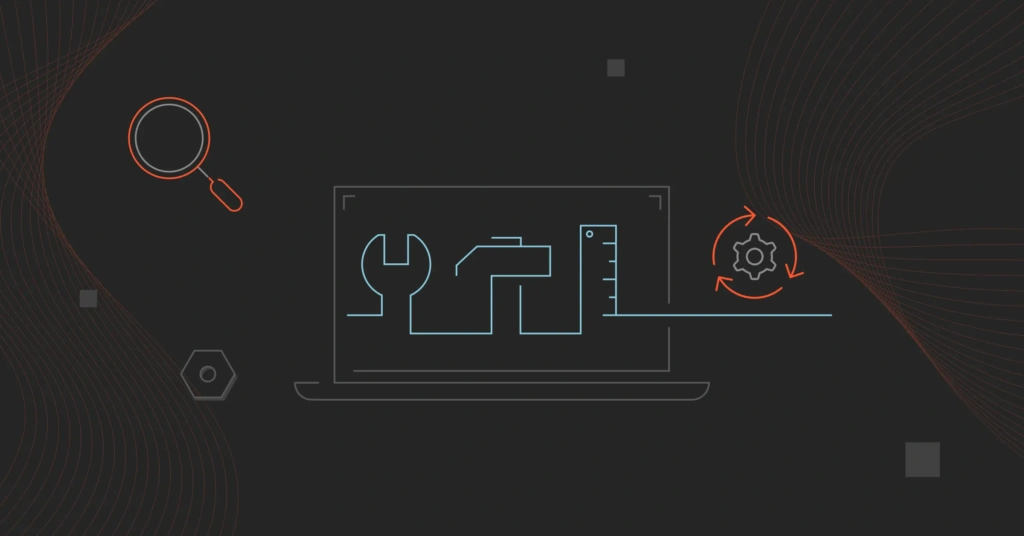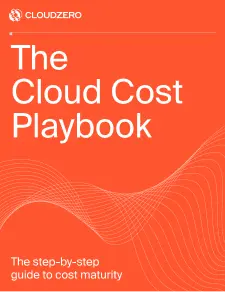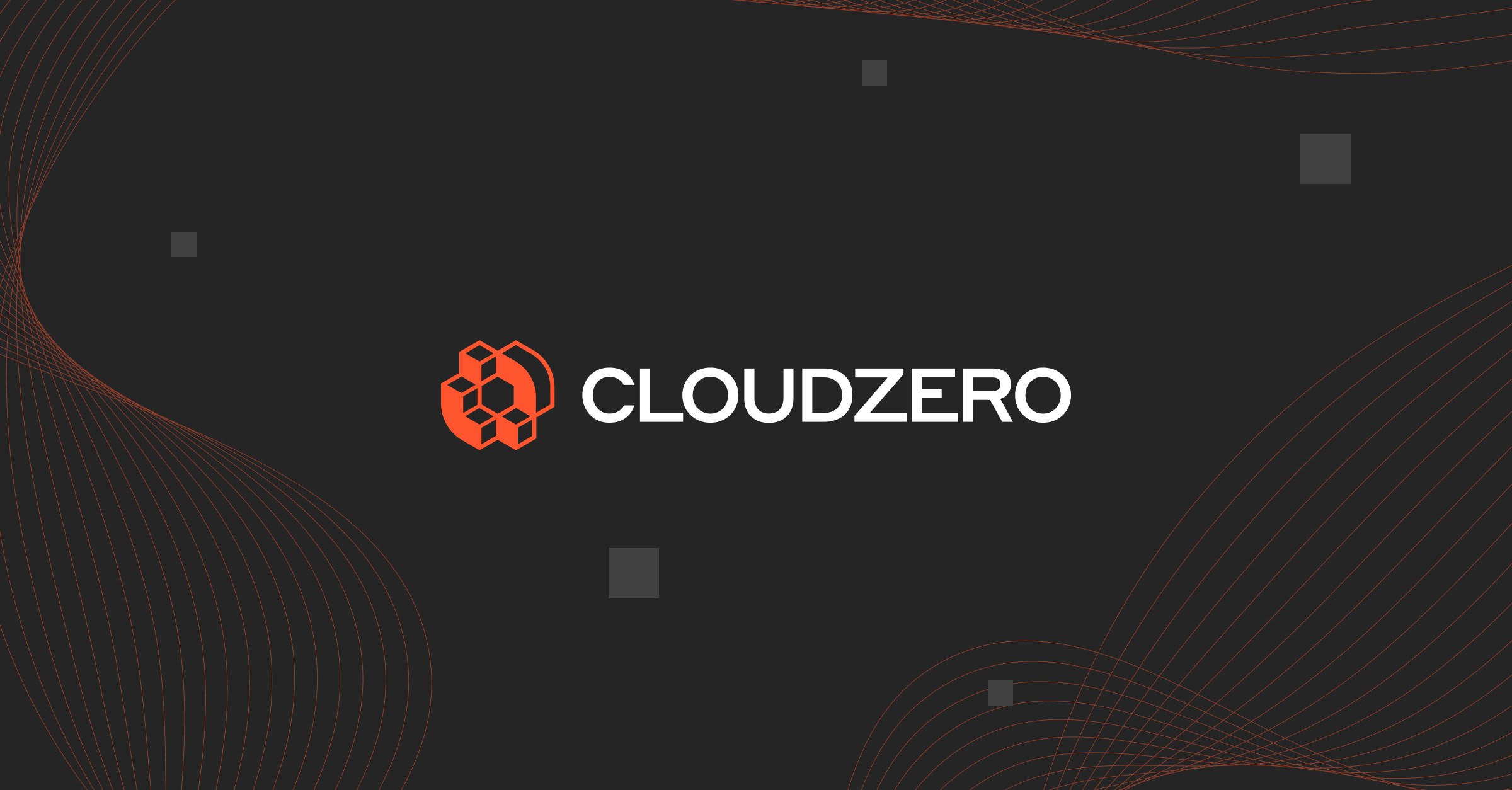As a modern software engineer or CTO, you’re responsible for building, delivering, and maintaining large-scale software solutions. Yet, software programs have grown increasingly complex over time, requiring meticulous work.
The competition threatens to take your subscribers every billing cycle if you don’t constantly innovate, too.
Customers want more, bigger, and better upgrades and updates. Regulators require that you release solutions that meet all compliance requirements, from data security to privacy protection.
Everyone expects you to deliver your best at all times. So, how do you balance engineering velocity and innovation with debugging, complying, and fixing things?
To make your life easier, we are sharing some of the best software engineering tools available now. The list includes tools for engineering cost management, IDEs, CI/CD, version control, process modeling, and application performance monitoring.
1. CloudZero – Cloud Cost Intelligence For Engineering Teams
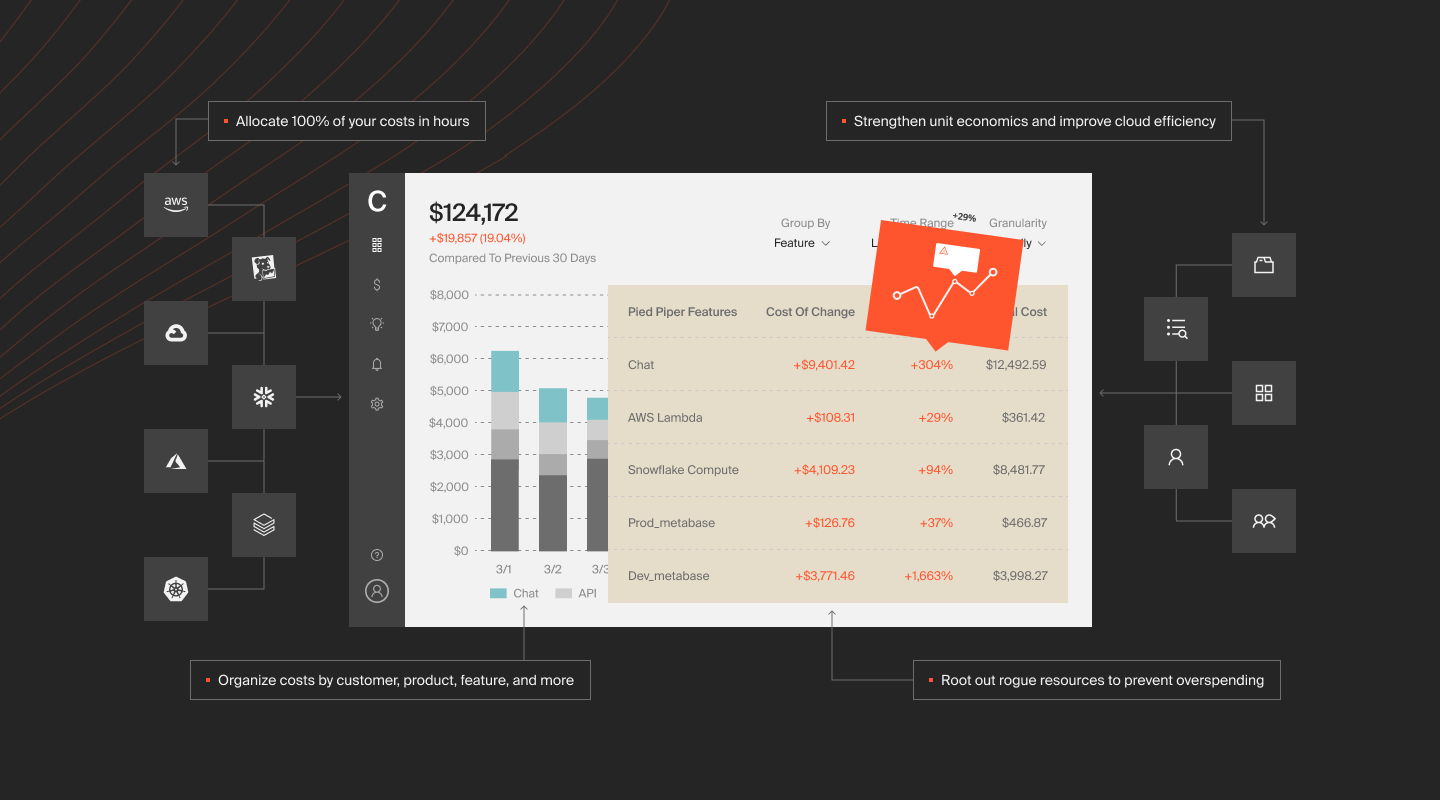
Want to treat cost like the first-class metric it is? CloudZero is not your average cost management tool. CloudZero’s cloud cost intelligence platform automatically collects, processes, and sends you actionable cost insights from AWS, Kubernetes, and Snowflake.
With CloudZero, you can:
- Track how development decisions affect cloud costs at every software development lifecycle (SDLC) step.
- View, filter, and share cost metrics across tagged, untagged, and untaggable resources.
- Get detailed information about cost per customer, product, feature, team, project, environment, etc.
- Know who, what, and why your development costs are changing, whether moving workloads to AWS or building solutions in Kubernetes.
- Identify precise cost-cutting opportunities without affecting customer experience or system performance.
- Obtain cost information on each tenant within a shared, multi-tenant environment.
- See what features are most popular and which ones to repurpose, refactor, or decommission to save costs.
- Monitor your SaaS cost of goods sold (COGS) information over time.
- Receive near-real-time alerts about cost anomalies via Slack, PagerDuty, ServiceNow, and email.
Here are seven reasons why software engineers love and use CloudZero daily.
Curious?  to see CloudZero for yourself.
to see CloudZero for yourself.
2. Feedier – Surveys And Polling Tool
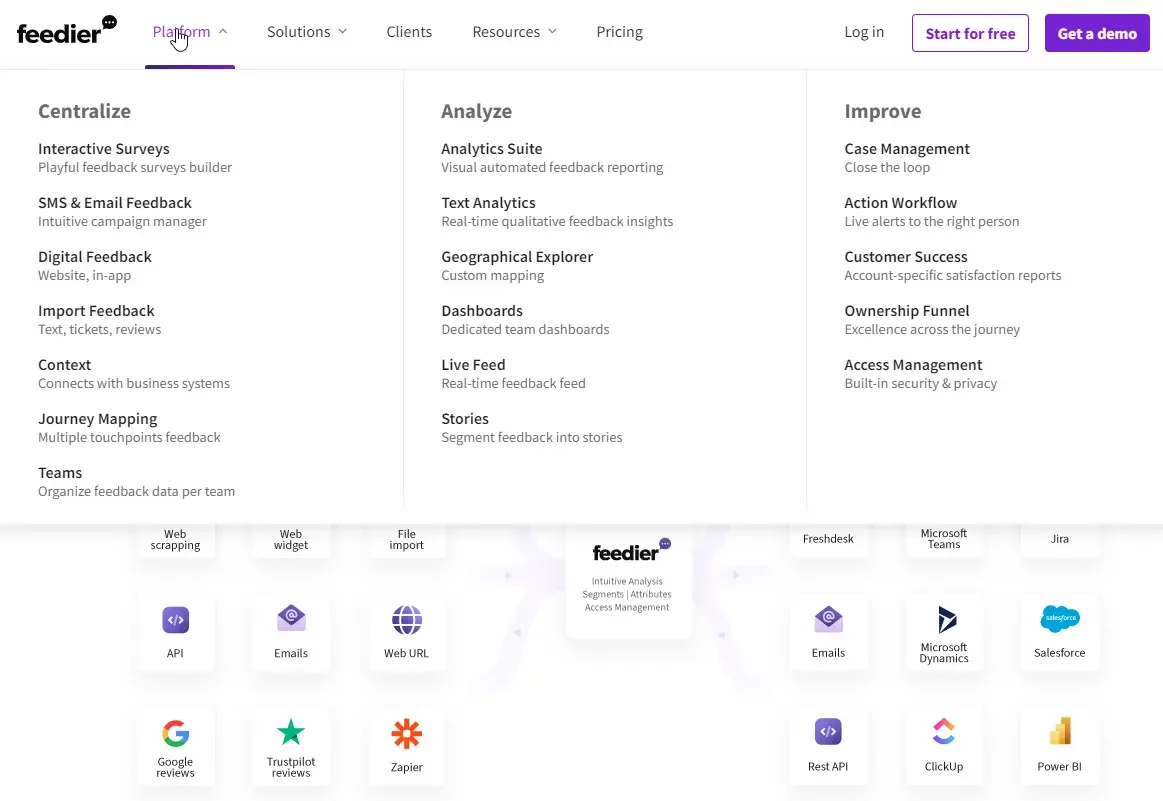
The Feedier feedback management platform empowers engineers, product developers, and customer service teams to collect, analyze, and act on actual user feedback before, during, and after the development phase. This is particularly important for determining which product features to prioritize in the initial releases so that you can direct your resources where you can reap the most ROI.
With Feedier, you can import feedback from crucial sources, such as SMS texts, CRM, forms, customer reviews, and tickets. This allows you to determine how to improve customer experiences at all points in their journeys.
Tools like Feedier: Promoter.io, Refiner, Birdeye, Ask Nicely, and Lattice.
3. Process Street – Planning, Process Modeling, And Compliance Management Software
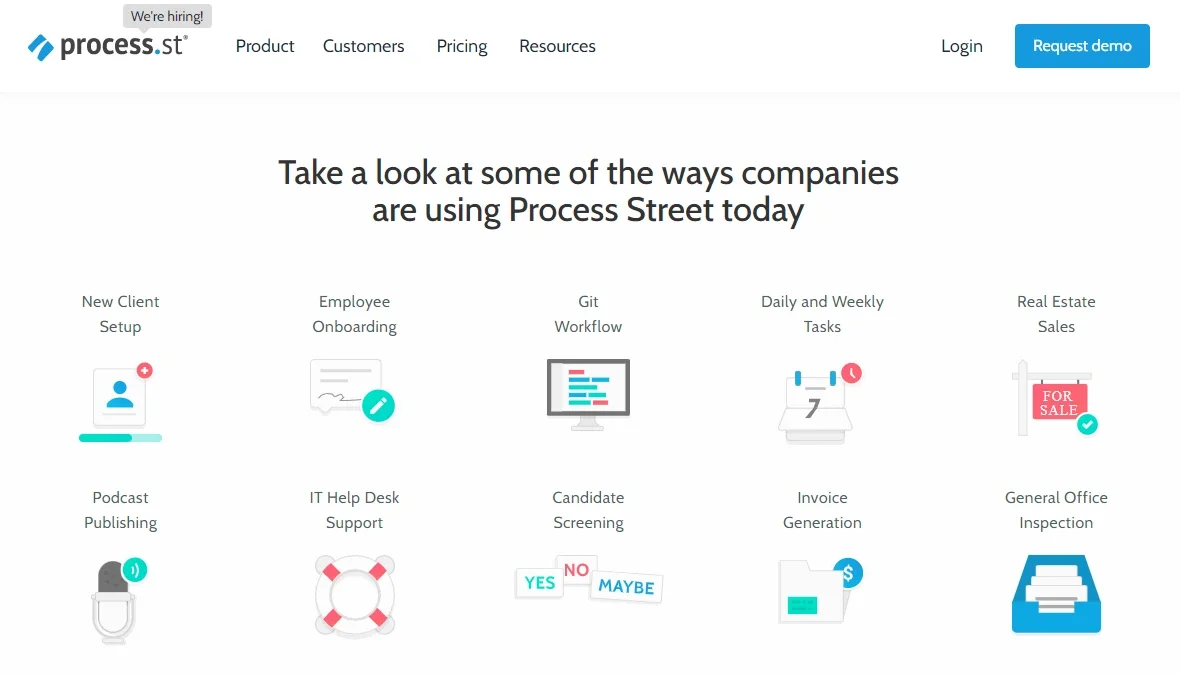
Process Street boasts a no-code and scalable platform for developers who want to get organized at every step of their Agile development process. It helps your team keep all internal processes, knowledge, and documents in one place so you can reuse them to save time and reduce repeat errors.
You can also effortlessly assign tasks and roles to your team to get things moving in a productive direction. After each person receives a notification, they can instantly access the Process Street checklist to help them finish their assigned work.
The tool also serves multiple use cases, from compliant processes for onboarding developers to training them and approving software releases.
4. SmartDraw – Design And Diagramming Platform For Developers
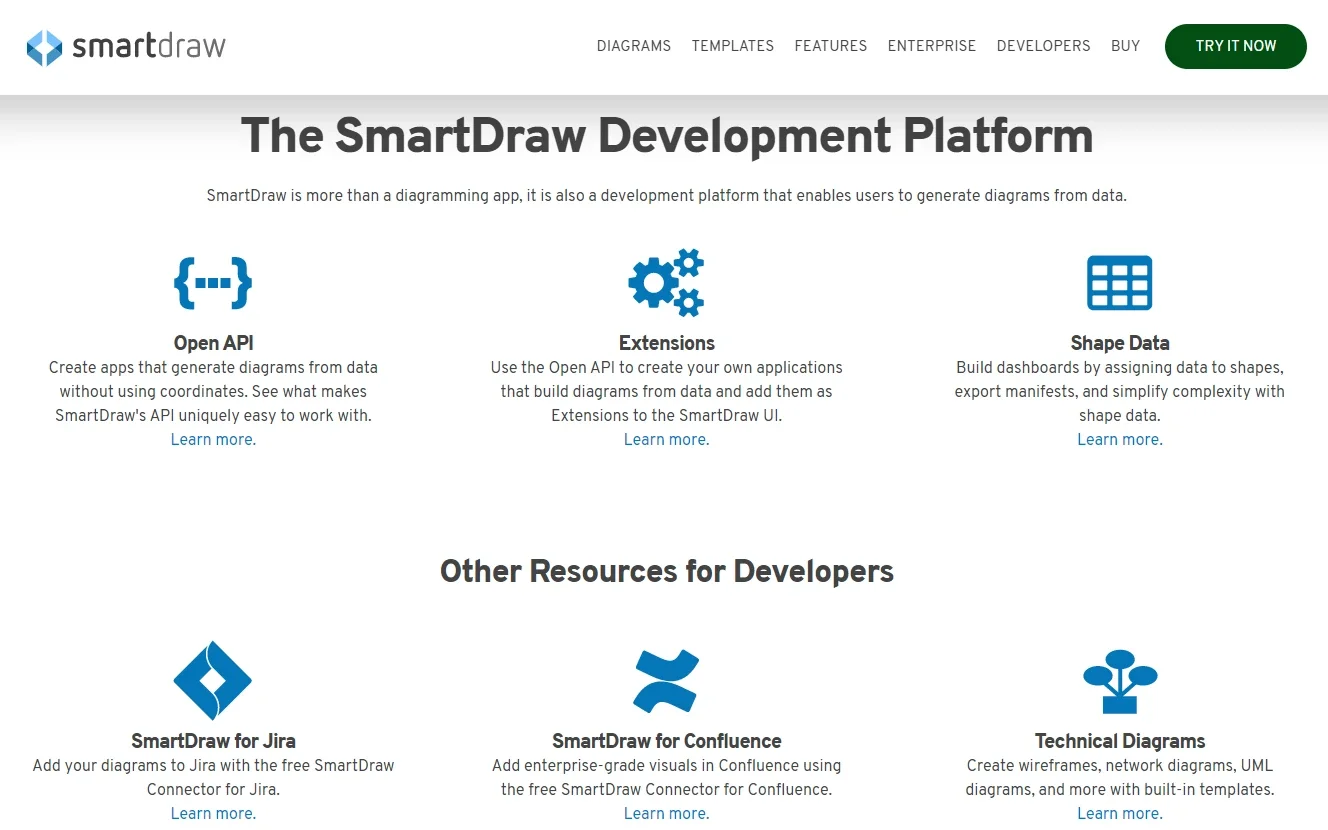
Once you’ve drawn up plans and need to make technical drawings of the proposed software, SmartDraw can help. The platform offers many templates, including software design, vinn, wireframe, decision tree, flowchart, use case, and cause-effect diagrams. You can also easily create, visualize, and use UML, ERD, and network diagrams to match your needs.
SmartDraw is also a development platform where you can generate diagrams from data. With the SmartDraw Open API, you can add new capabilities to the tool. You can then write custom extensions that help you auto-generate diagrams from external data.
5. JIRA – Project Management Tool For Software Engineers
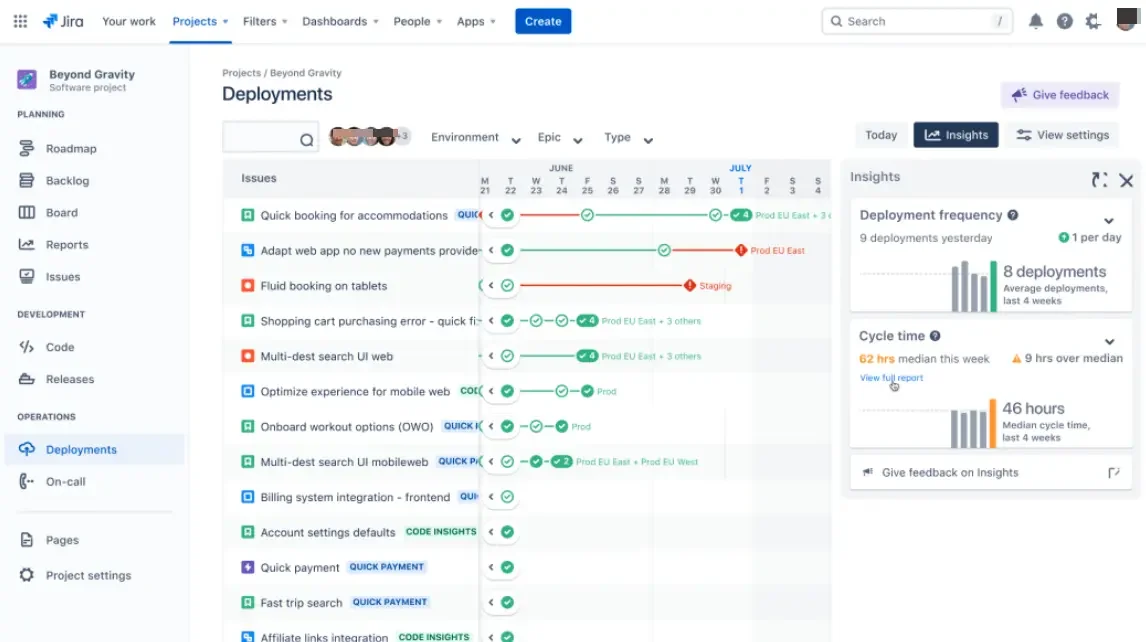
Atlassian’s Jira is popular with Agile and Scrum software engineering teams at every stage of the software development lifecycle (SDLC). With Jira, you can plan sprints, track issues, and manage development progress with Kanban and Scrum boards.
Roadmaps, workflow customization, and project templates make it easier for developers to work together, code, commit, and deliver high-quality software more quickly.
Jira Software integrates seamlessly with many other software engineering tools, like product roadmaps, Git repositories (natively with BitBucket), knowledge management, workflow, and CI/CD platforms. It is also free for development teams with fewer than ten members.
Top Jira alternatives: ProofHub, Celoxis, Smartsheet, ProdPad, and ClickUp.
6. Vaadin – Modern Web App Development Platform For Java
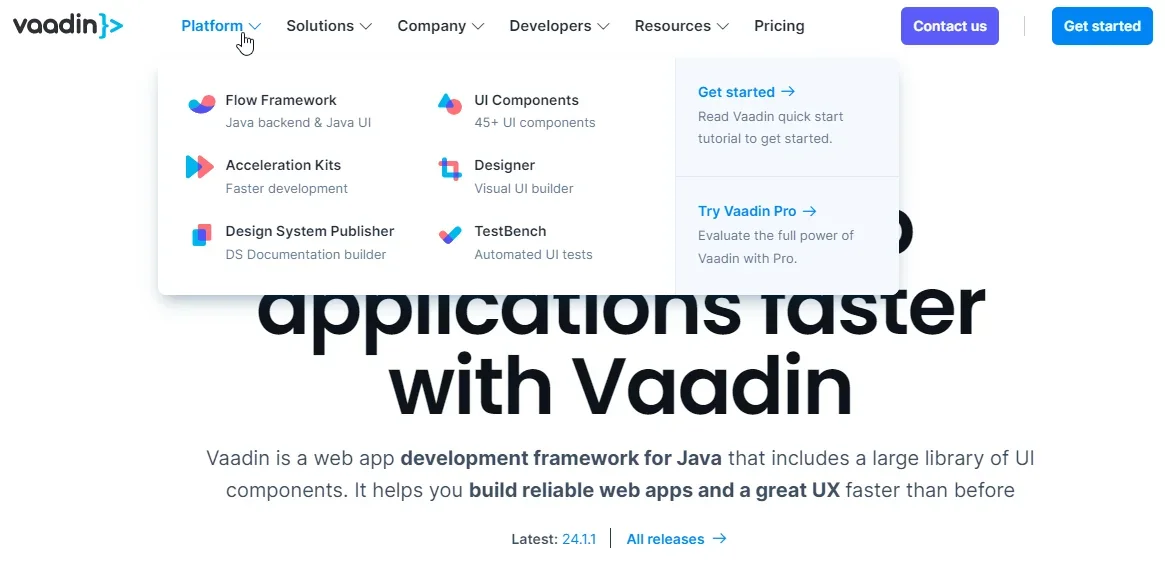
Vaadin provides an integrated platform for accessing the tools needed to create Java-based applications, from frameworks and UI/UX components to architecture and collaboration tools.
By reducing the time you spend configuring build tools and fixing incompatible libraries, you can devote more time to building and releasing features your users care about. Whether a new developer or a veteran, Vaadin enables you to build consistent Java apps without tinkling with JavaScript or HTML.
7. Git – Distributed Version Control System
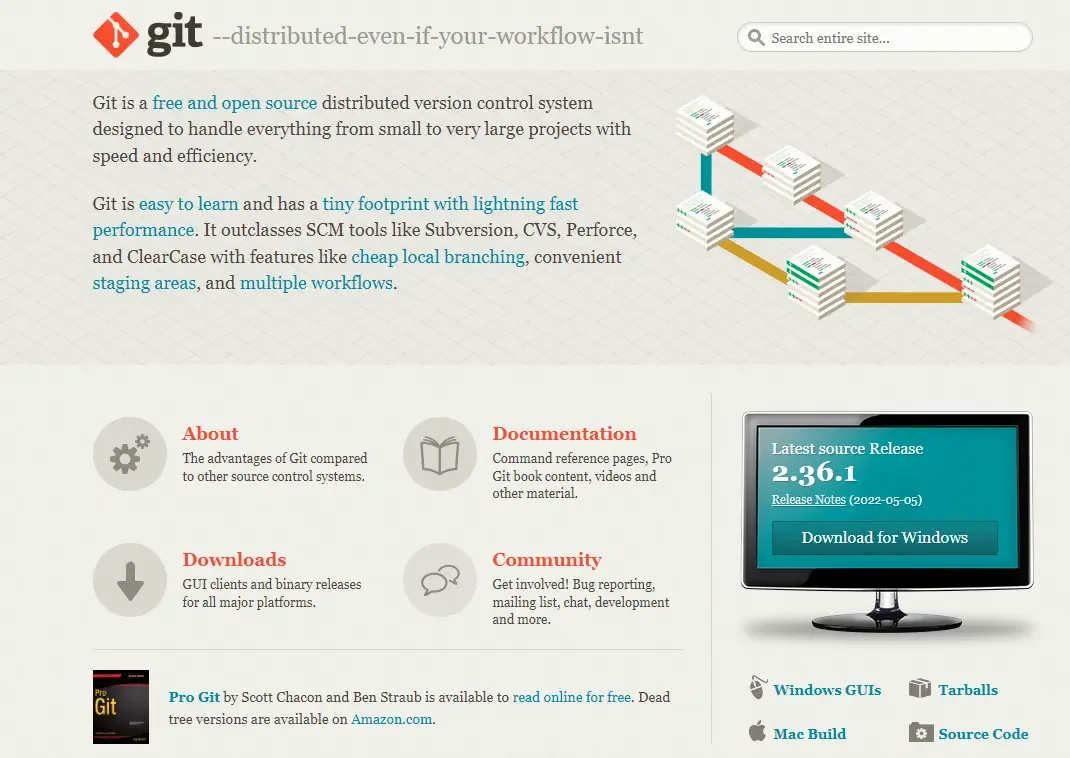
Git is a speedy, free, open-source version control system for nonlinear workflows. It is particularly powerful for its collaboration, data integrity, and distributed features. Software developers in small and large teams can also seamlessly commit source code with Git and endlessly change the code in teams or as individuals.
Git is unique from alternatives like Subversion and CVS in several ways. For example, Git enables developers to have multiple local branches that are independent of each other. So, you can have role-based code lines: one branch for only production-ready work, a testing branch, and small ones for everyday development. Creating, merging, and deleting the code lines also takes just seconds.
8. GitLab – Source Code Management Platform
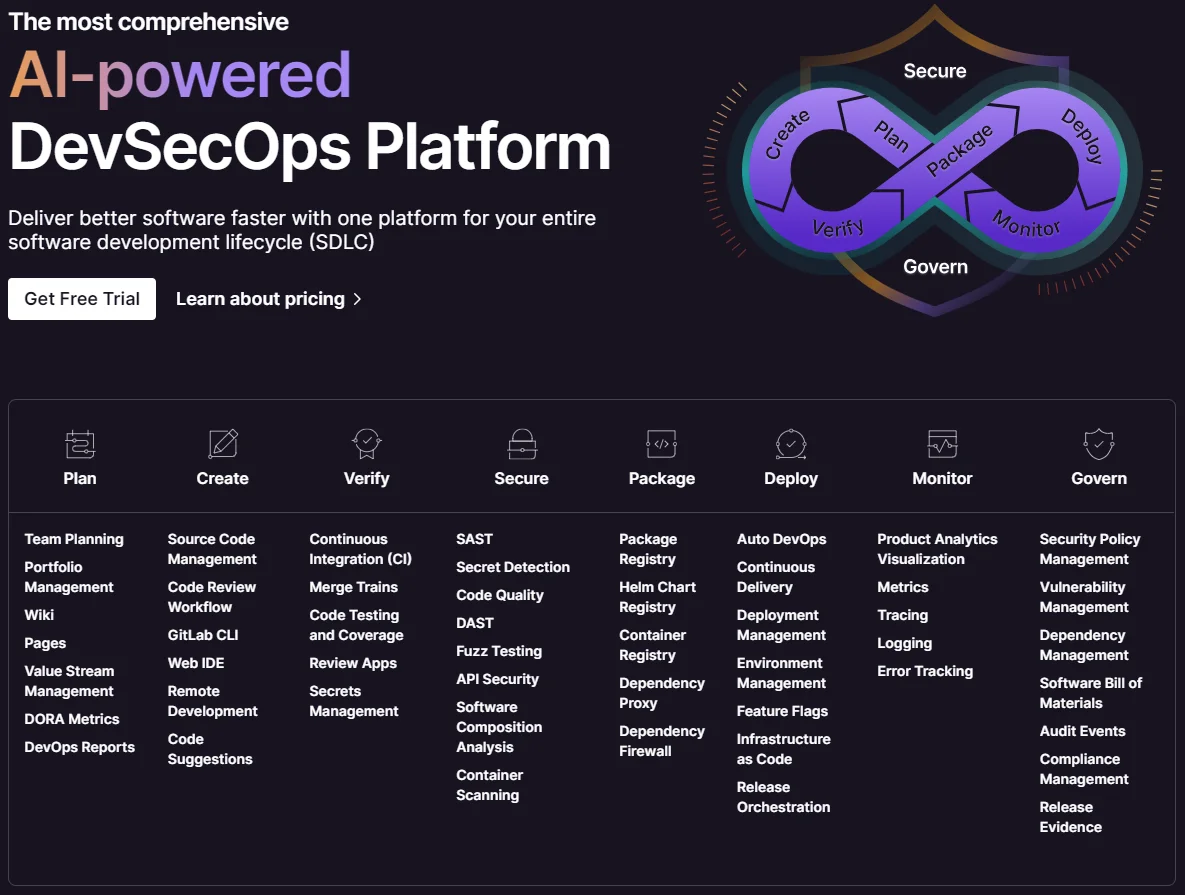
If you are looking for a top GitHub alternative, GitLab is a powerful source code hosting, repository, and management platform. Unlike GitHub, its Community Edition is open-source. GitLab also supports both on-premises and cloud-based workflows and code reviews.
GitLab SaaS frees you from the hassle of installing and managing GitLab yourself, while GitLab Self-Managed gives you that level of control on your own GitLab instance. There are more differences, including free and paid features for each edition.
Also, while GitHub only recently started providing native CI/CD support, GitLab has offered this and more DevOps-oriented tools for a while, making it a complete software development platform. GitLab also focuses more on reliability and security than speed.
GitLab alternatives: GitHub, BitBucket, and SourceForge.
9. JetBrains IDEs – Complete Software Engineering Suite
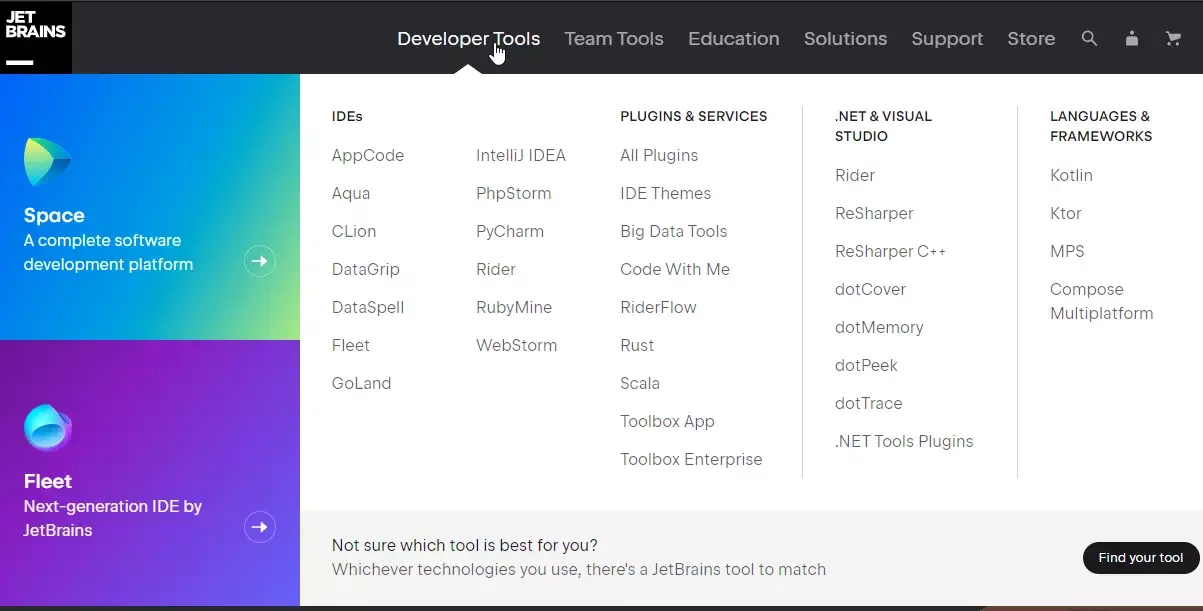
Many Integrated Development Environment platforms exist, including popular ones like Adobe Dreamweaver CC, AWS Cloud9, and Apache NetBeans. However, JetBrains’ software engineering suite helps developers find all the tools they need in one place.
The platform includes 11 IDEs, including IntelliJ, the Java IDE for commercial use. That means you’ll find an IDE suitable for your needs and programming language, from JavaScript and HTML to CSS and Python.
It also supports PyCharm, a Python development tool that allows you to code in other technologies and debug your software.
10. VS Code – Flexible, Extensible Coding
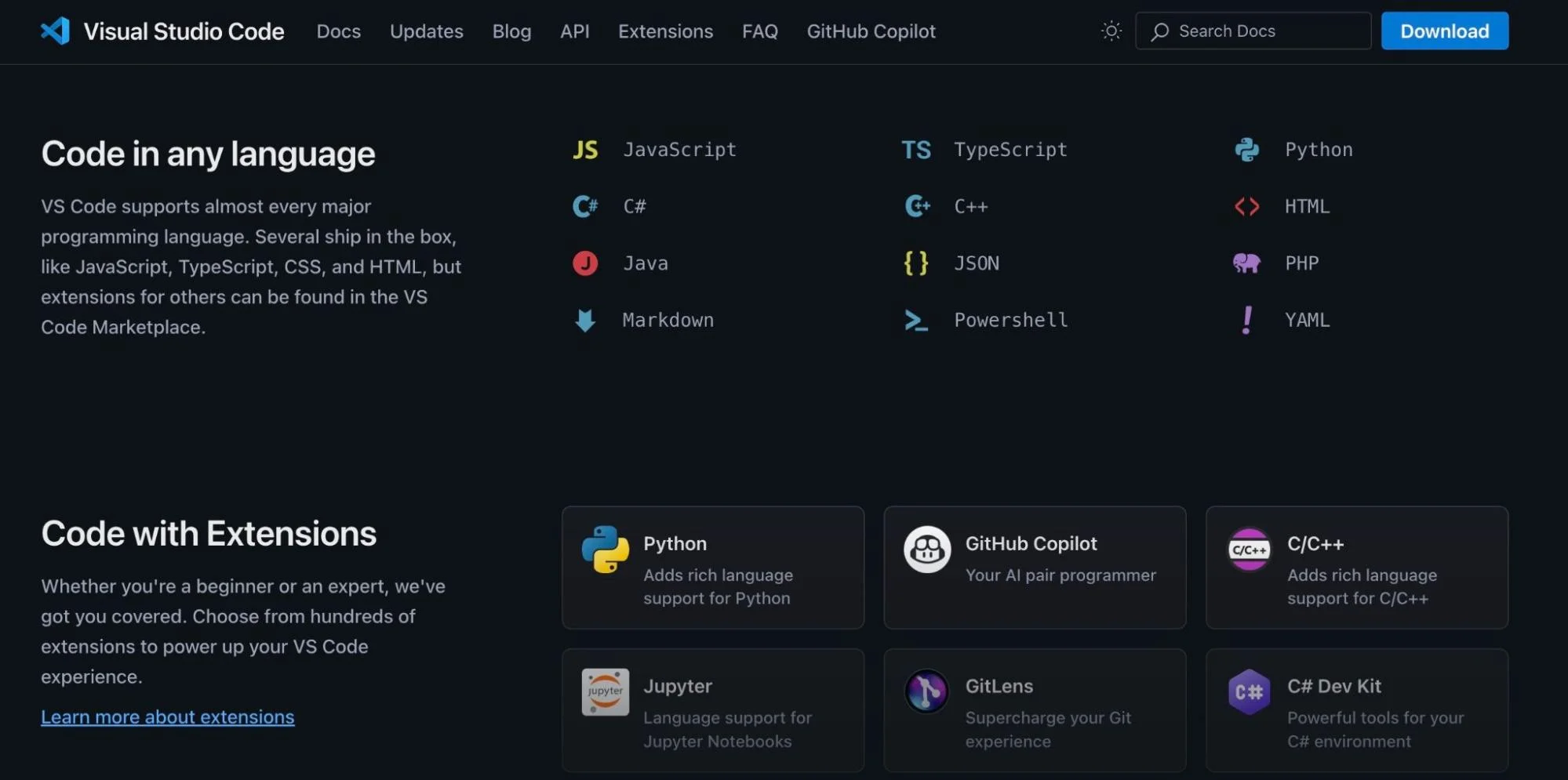
Visual Studio Code (VS Code) is a lightweight and robust source code editor developed by Microsoft. It has become a staple for software engineers due to its vast extension ecosystem and features that improve productivity across multiple programming languages and tasks.
VS Code integrates seamlessly with tools like Docker, Kubernetes, Jupyter Notebooks, and Ansible. It also supports DevOps workflows with CI/CD tools like Azure DevOps, Jenkins, and GitHub Actions.
VS Code is also available on Windows, macOS, and Linux, making it ideal for teams across diverse environments.
11. Code Climate – Automated Code Review Platform
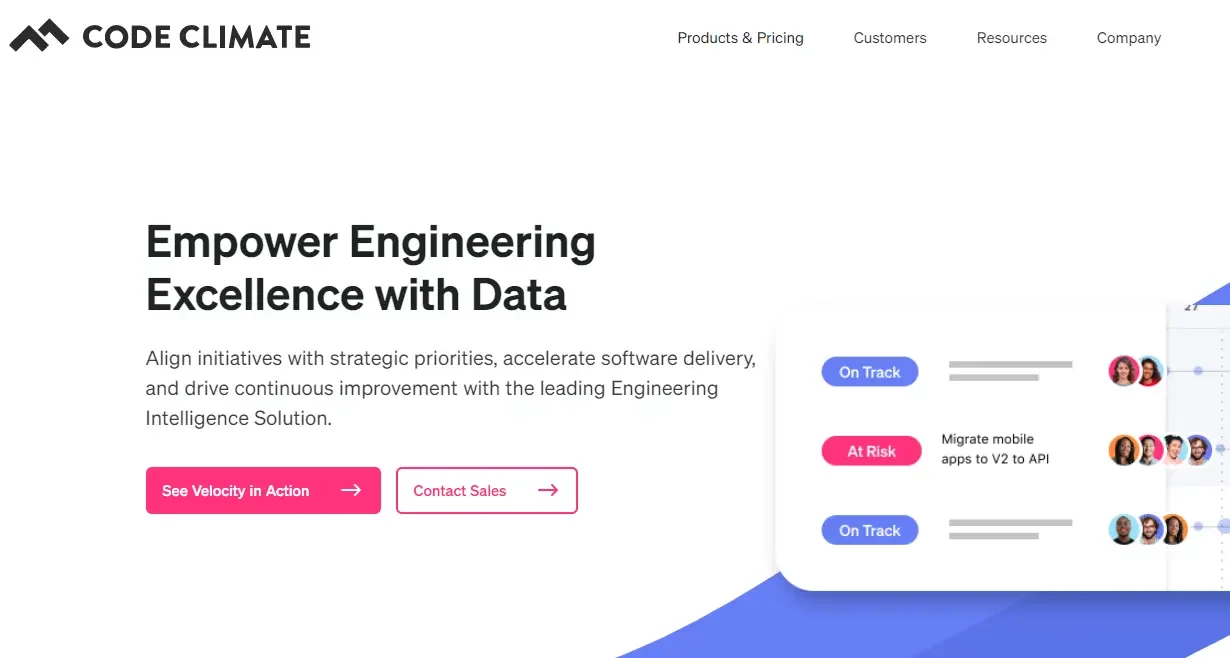
Code Climate is an open-source platform for automating code reviews. It offers three types of GitHub pull requests. At a glance, you can see the status of each commit and decide whether it’s ready for merging.
Code Climate helps software engineers build clean code throughout the development process. It inspects the code for issues like duplication, security, and complexity. Its other highlight features include shared and organization-wide configuration, team management, data-driven engineering, and test coverage.
12. Test.ai – Automated Software Testing Tool
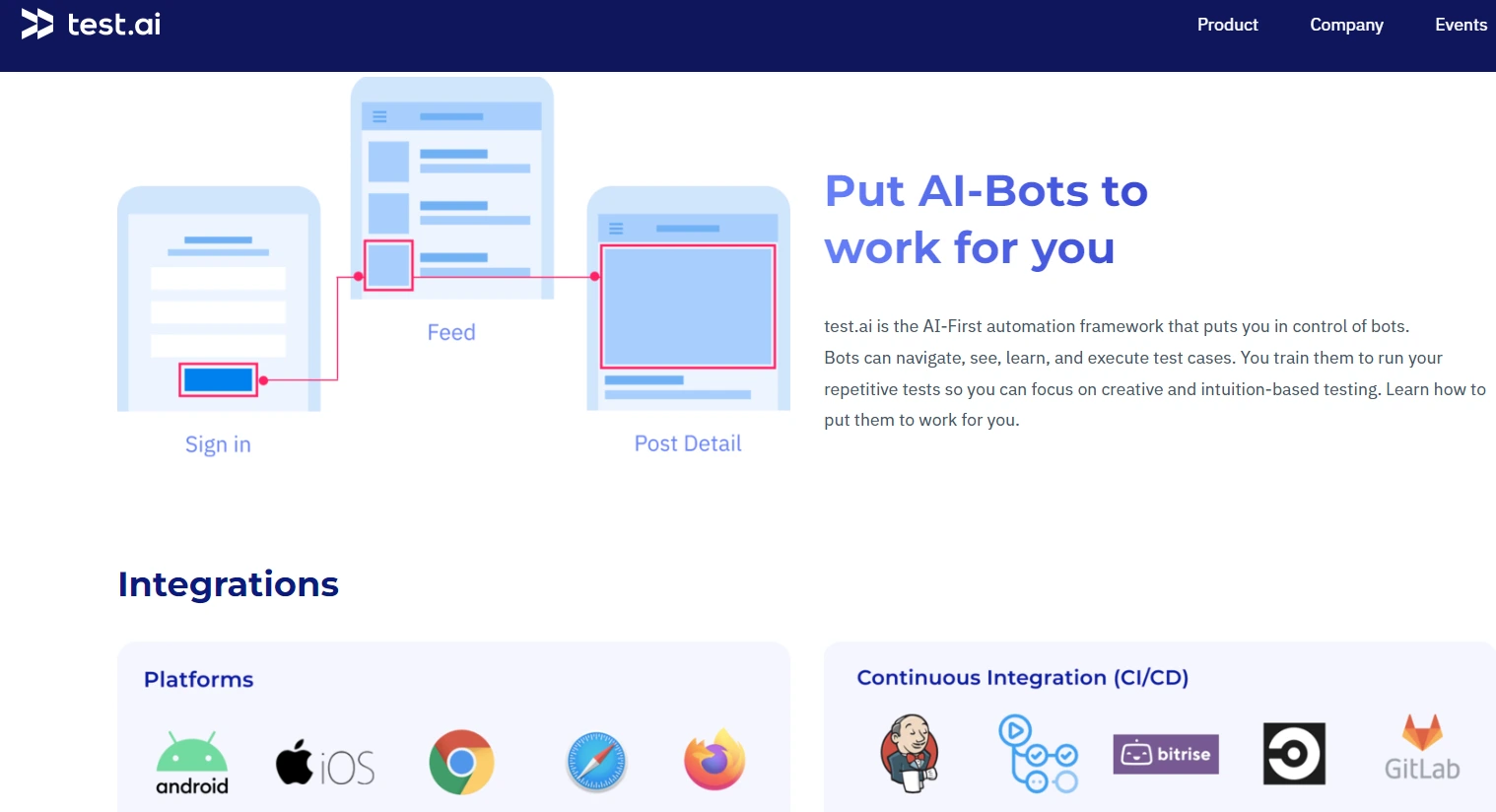
Formerly Appdiff, Test.ai will help you use Artificial Intelligence to detect, review, and fix software issues on any device and platform. Its bots browse, examine, process, and execute test cases on your team’s behalf. By training them to run repetitive tests, you can set your team free to focus on more creative tasks and continuous improvement goals.
You can reuse tests across platforms and devices, test at scale, and visualize your test results for more straightforward interpretation. It also integrates with multiple CI tools, such as Jenkins, CircleCI, and various software development platforms.
13. Ansible – Automation And Configuration Management Platform
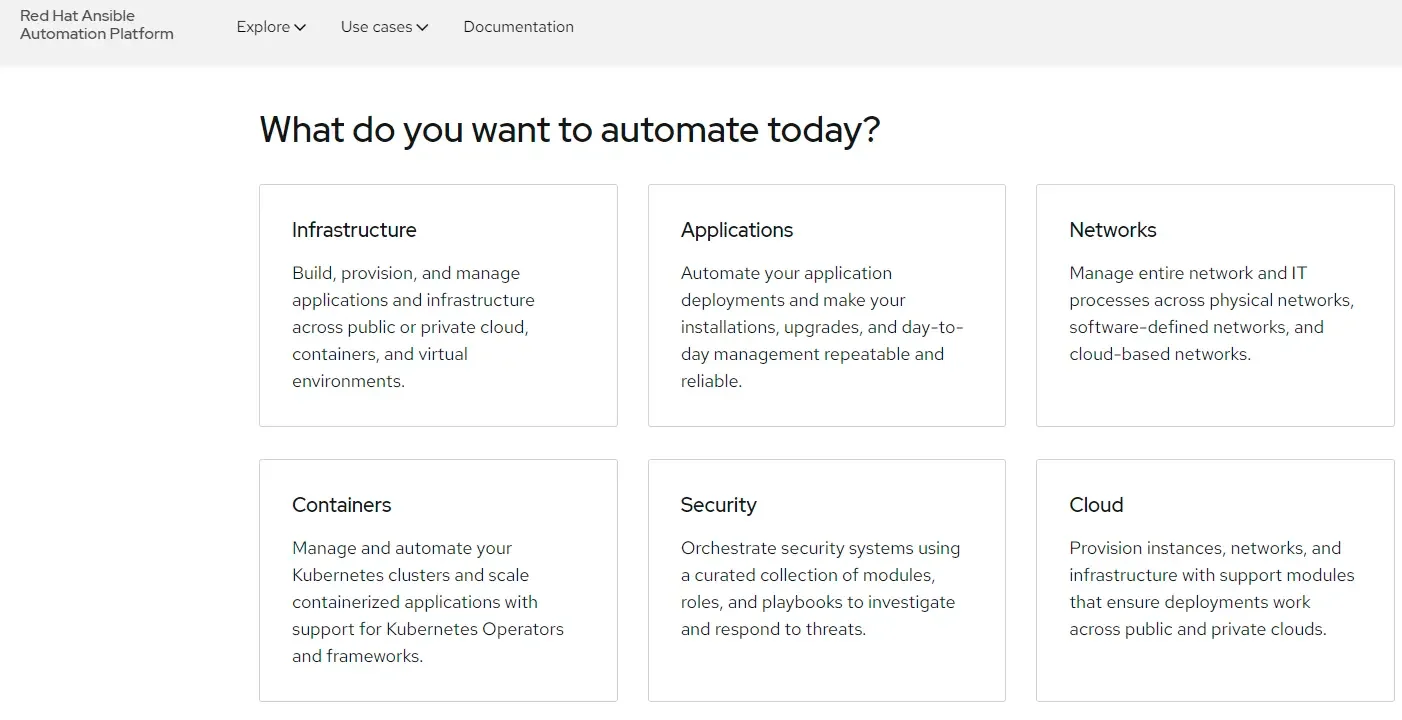
As a configuration management tool, RedHat’s Ansible maintains your system’s current state no matter how many changes you make. In addition, it speeds up changes and deployments, reduces the need for manual intervention, minimizes human error, and makes system administration more predictable and scalable.
You can also track the status of your resources and prevent repeated tasks, like installing the same package multiple times.
Ansible helps improve system recovery following a critical event. For example, if your server went down for unclear reasons, Ansible will enable you to deploy a new one quickly. It will also record your changes so you can identify the root cause. You can also run a system audit to determine where the problem originated.
14. CircleCI – CI/CD Platform
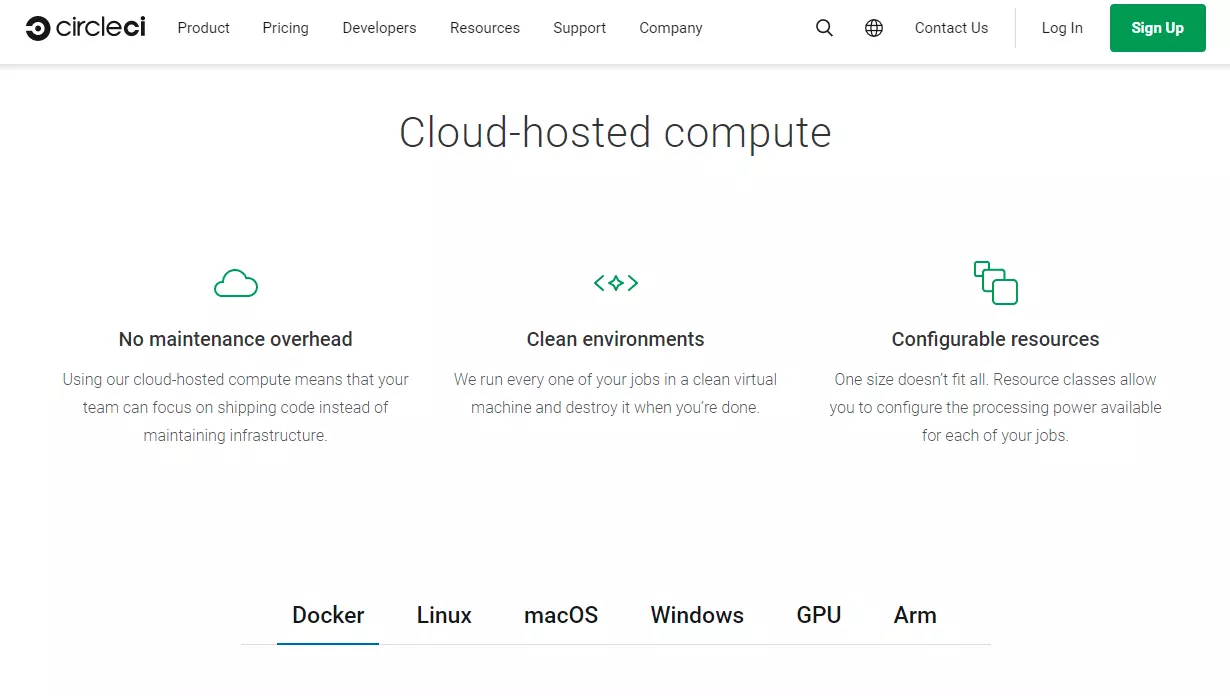
CircleCI originally served as a Continuous Integration (CI) tool. However, it has since developed into a comprehensive CI/CD platform for scalable software delivery. It validates live code changes, manages build logs, and supports access permissions to enhance code security.
CircleCI also works seamlessly with version control and source code management platforms like GitLab, GitHub, and BitBucket. The platform is also FedRAMP-approved and compliant with SOC 2 Type II. The tool runs jobs on Linux, Windows, macOS, or the cloud.
15. Kubernetes – Container Orchestration And Management Platform
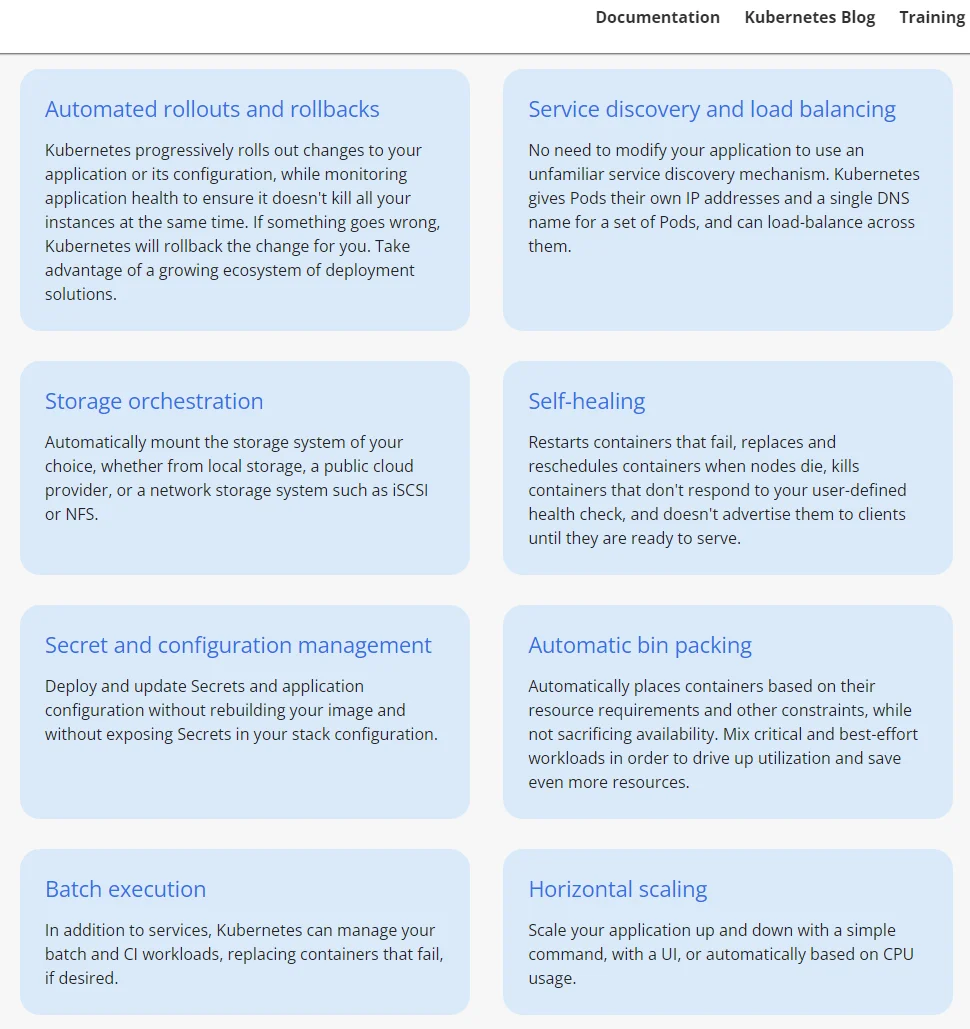
If you want a modern, vastly scalable platform for containers and microservices, Kubernetes or K8s could be your Docker alternative. It is an open-source and production-grade platform with a bubbling community of resourceful developers.
Kubernetes is both a platform and a tool. It can deploy, scale, and manage containerized applications and support distributed microservices. Thanks to its self-healing, load balancing, batch execution, automated rollbacks, and rollout capabilities, it is suitable for these use cases at the enterprise scale.
Otherwise, Docker might be a more suitable platform for smaller projects.
Kubernetes alternatives: Docker, Rancher, Amazon Elastic Kubernetes Service (EKS), and Red Hat Openshift.
16. Gremlin – Chaos Engineering Platform
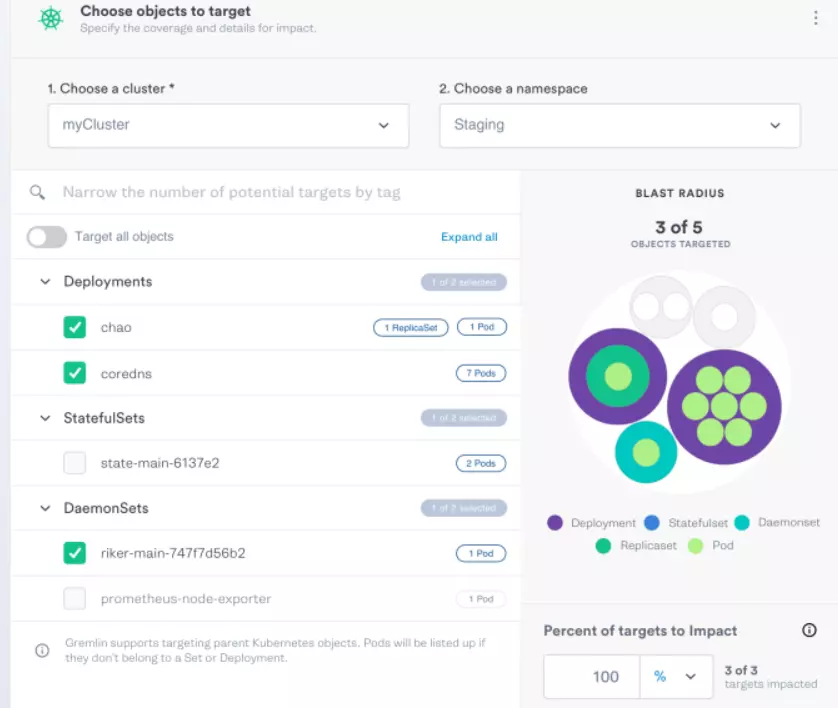
Gremlin markets itself to identify weak points in your software before launch. However, developers tend to use it more to test how systems react in case of failure by launching targeted attacks.
The tool lets you use CPU spikes, server shutdowns, blocked DNS access, process killers, and latency injections to assess your system’s resilience. You can use it in Kubernetes to implement chaos engineering and follow the testing process graphically.
To be sure, Gremlin includes a kill button to prevent experiments from getting out of hand.
17. Sematext – All-In-One Continuous Monitoring Software
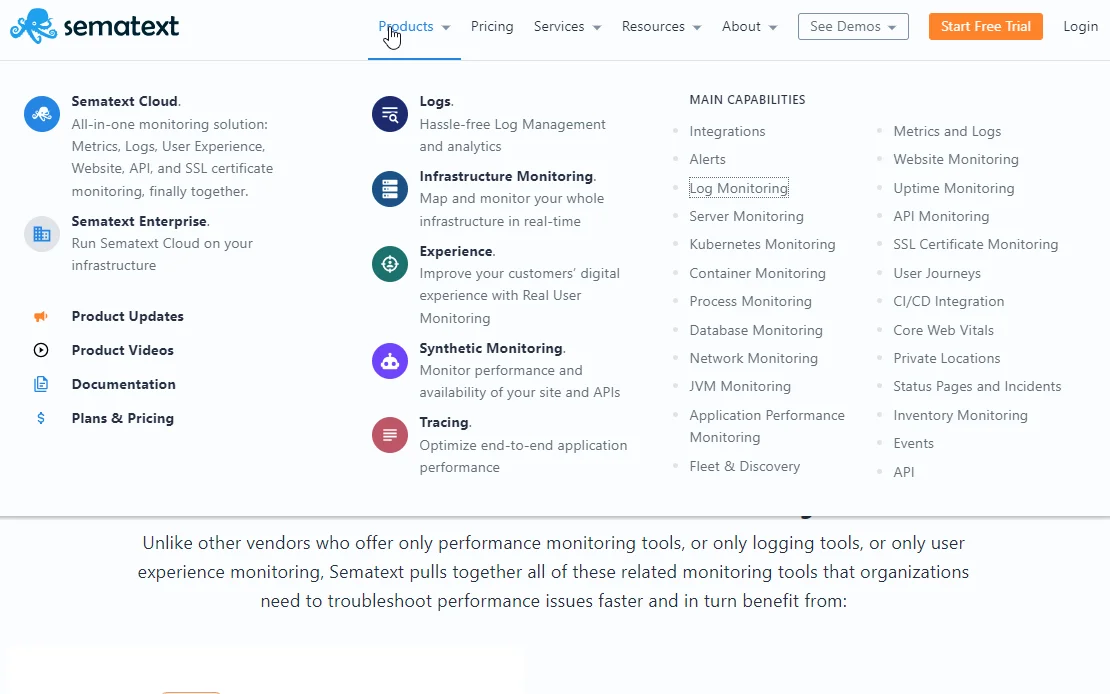
You need a comprehensive monitoring service to keep track of your software solution’s overall health and functionality, whether you built it on-prem, in the cloud, or via a web portal. In Sematext, you get a thorough, continuous monitoring service you can use in a hybrid cloud or multi-cloud setup.
You can detect and troubleshoot live and performance issues with metrics, synthetic logs, and real-user monitoring in one place. Then, you can track everything, from application and server performance to container health and website activity.
18. Fugue – Continuous Cloud Development Security Platform
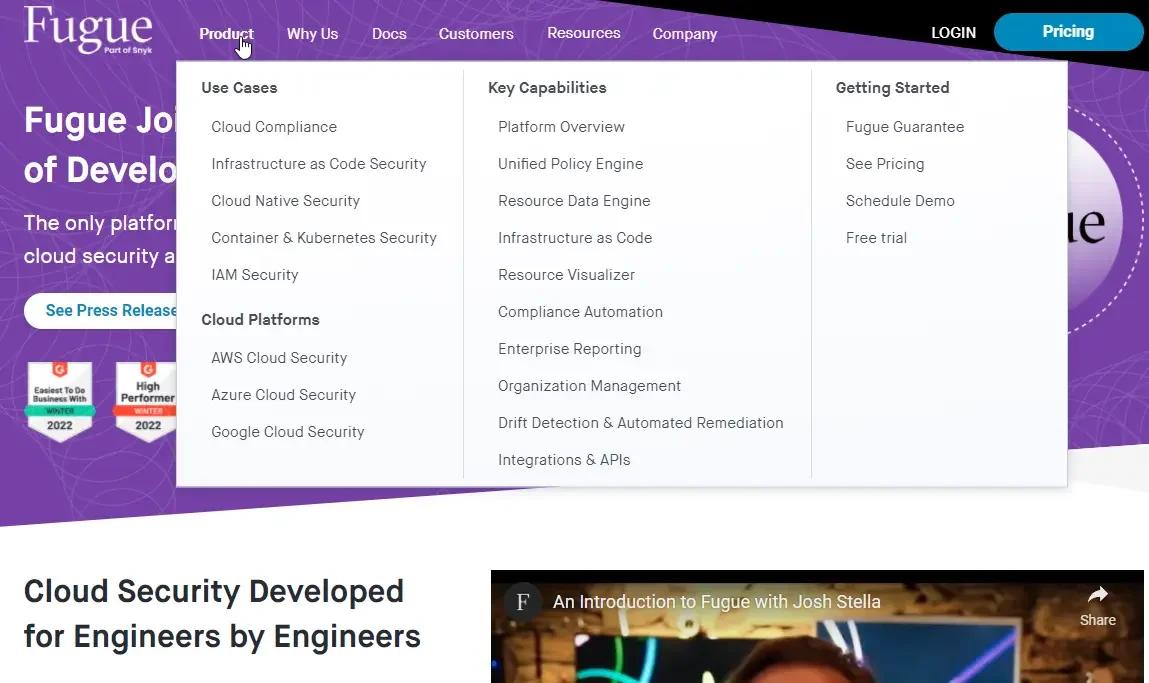
Synk’s Fugue provides a Unified Policy Engine that handles cloud compliance and security before and after deployments. You can manage all rules throughout your software development lifecycle with one policy engine. Using Fugue, you can quickly secure resources across clouds and teams in cloud-native and Infrastructure-as-Code environments.
Fugue alternatives: Lacework, Orca Security, Threat Stack, Sysdig Platform, and Vanta.
19. PagerDuty – Incident Response Service
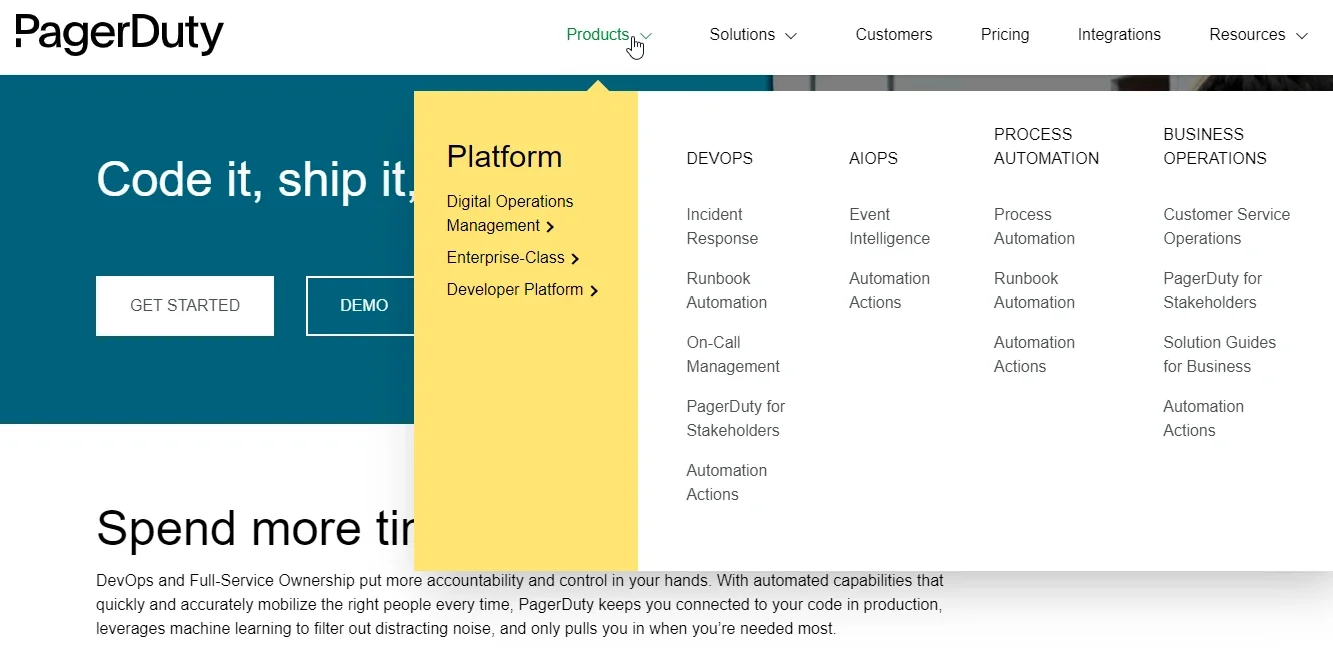
PagerDuty is an end-to-end, automated incident response and management for cross-functional teams. PagesDuty offers incidence response automation solutions, from DevOps and AIOps to security and customer service teams. For developers, the system gathers alerts from your monitoring stack, groups them into incidents, and sends only the most relevant ones to on-call teams.
The teams will receive the alerts almost instantly via their preferred channel so they can address the issue almost immediately. With runbook automation, your team can identify and fix root causes, learn from the past to prevent recurrences, and continuously improve code.
20. Zapier – Workflow Automation Platform
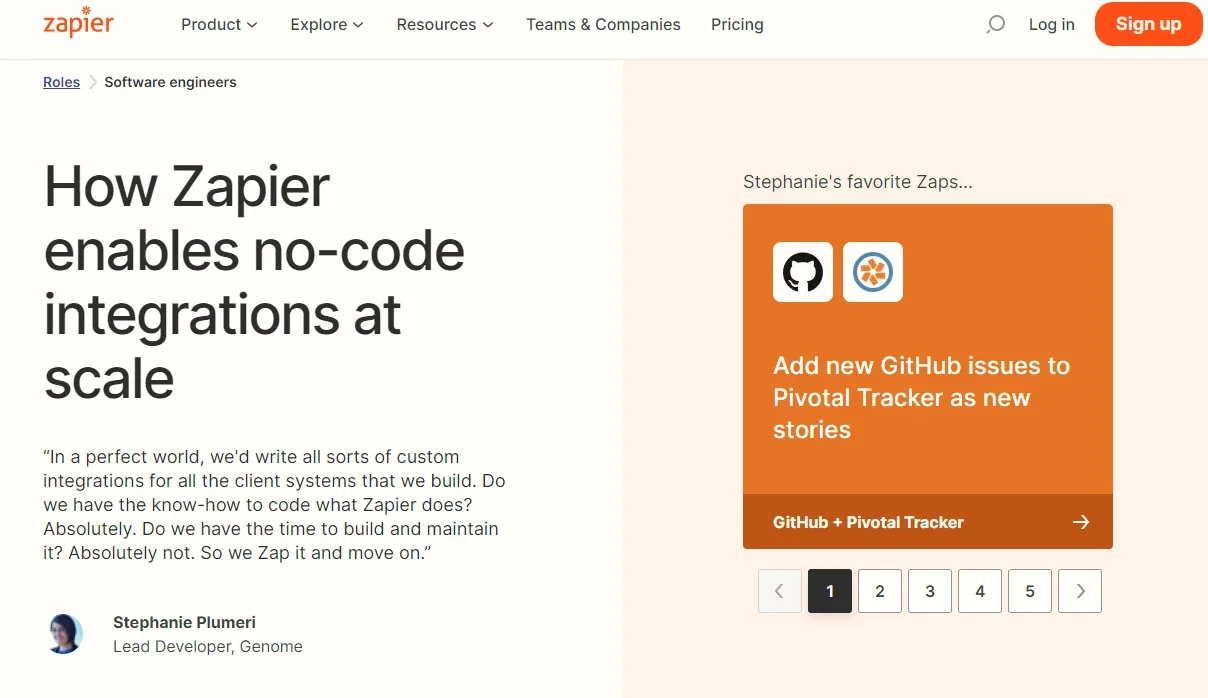
Once you’ve released your application into production, Zapier helps you enable your organization’s various apps to communicate with each other. Zapier empowers you to use If/Then logic to make a single action (Zap) in one app to trigger multiple tasks (up to 100 actions) in a single or different apps. You can set up triggers and even schedule when an action takes place.
For example, you could configure your email marketing system to automatically send a thank-you email when a new customer purchases an item from your Shopify store. The system could also notify your team on Slack and add the new buyer to your mailing list for future promotional campaigns. Zapier works with almost any app you have.
Alternative to Zapier: IFTT
21. AgilePlace (LeanKit) – Dedicated Kanban Tool
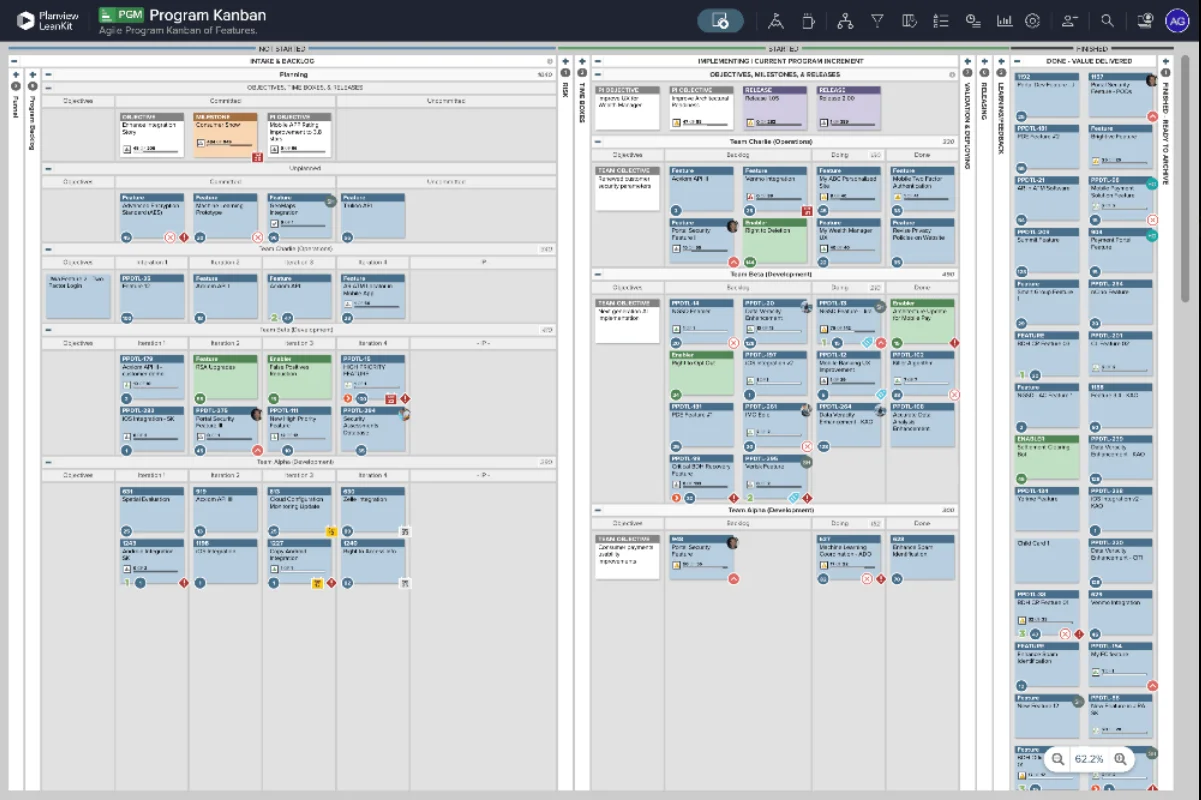
Formerly LeanKit, AgilePlace provides enterprise Kanban software. You can use it to visualize, organize, and coordinate Lean and Agile development and delivery work. AgilePlace enables you to automate handoffs and roll up data to a program, team, and Agile release train boards as each team continues to use its preferred tool.
Card Scoring enables you to rank and set work priorities according to the criteria that matter to you most. You can then use the boards to break down work and manage plans against a strategy. The platform supports dependency visualization to identify risks to plans and sequences of work. Board health metrics provide real-time analytics of your plans and flow.
22. Codenvy – Cloud Workspace For Dev Teams
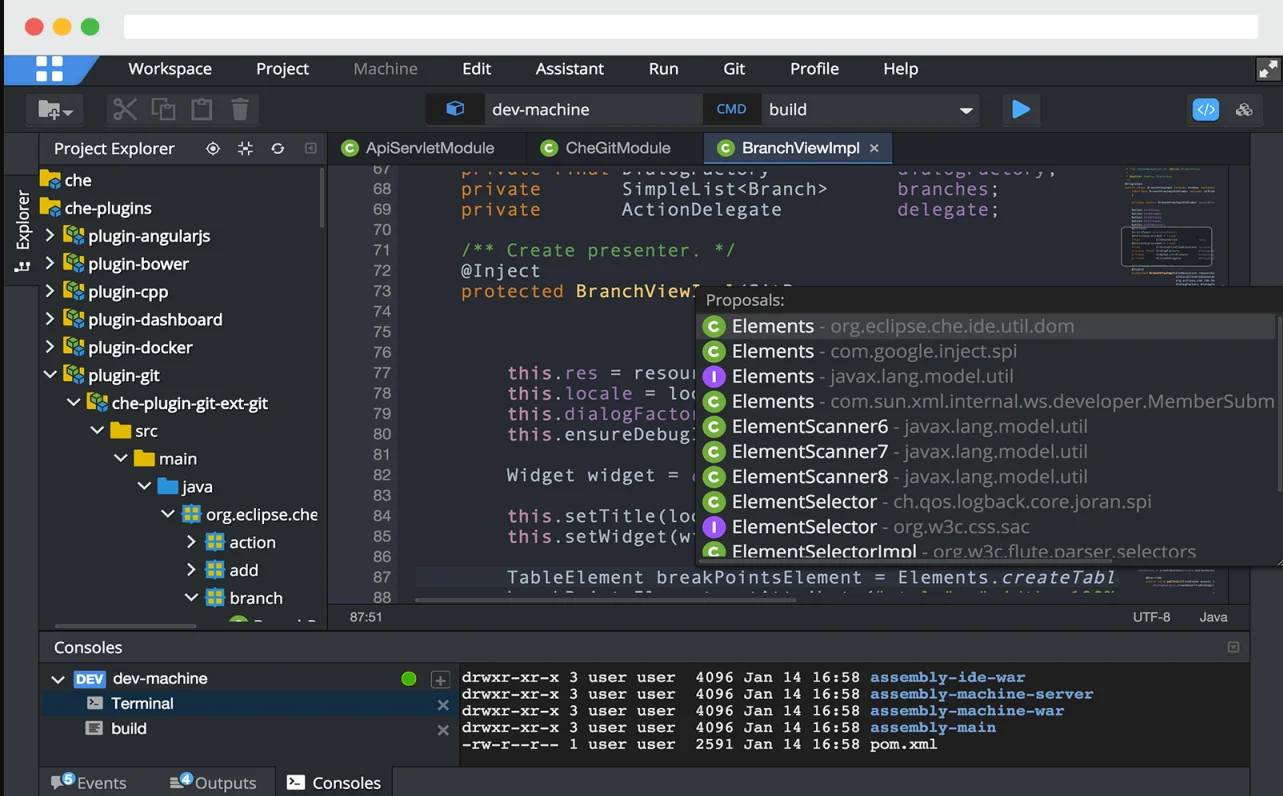
With Codenvy, software development teams can collaborate in a shared, cloud-based workspace regardless of their physical location. It combines all the tools and integration a team needs to develop and deliver projects.
From spinning up new IDE and Docker environments to configuring test and terminal access servers, the platform makes it work in a single place, streamlining dev workflow and improving productivity.
It also supports IDE or programming language, one-click project onboarding, and containerized workspaces. You can integrate issue management, version control, and full root access (and SSH). Codenvy is available on-premises, as a SaaS, or as a white label.
23. Crimson Editor (Now Emerald Editor) – Free Code Editor For Windows

This is a professional-grade source code editor for Microsoft Windows. It can also serve as a free alternative to NotePad for text editing. However, Crimson Editor offers more, including HTML, Java, Pearl, C++, and C support. Additionally, it is resource-efficient, making it ideal for use on PCs with low memory.
The code/text editor still works great for Windows 10, is quick to load, and some consider it the best pure text editor for Windows.
With the Emerald Editor version, the editor now supports over 60 programming languages, enables you to create a diverse range of macros, and manages uploading files via FTP.
24. Progress Telerik – An Agile Project Management Tool
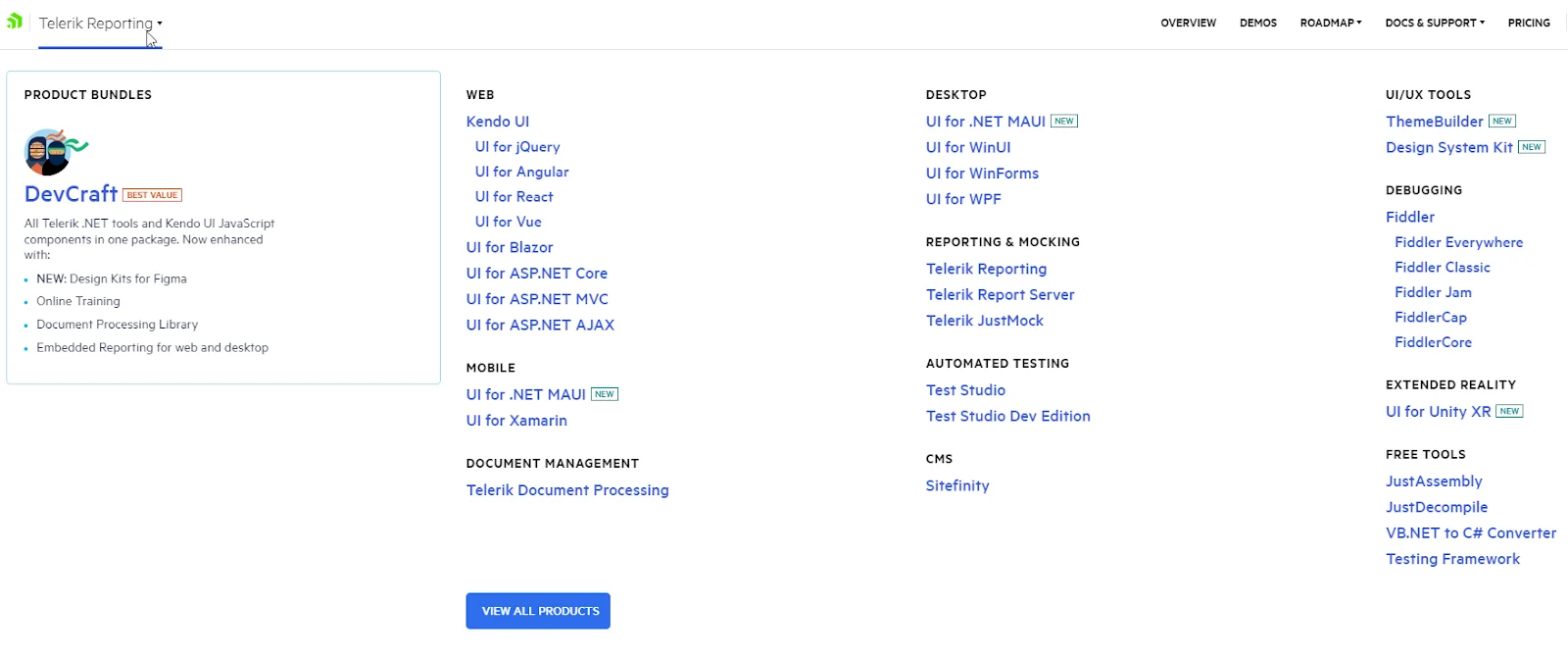
Formerly Telerik TeamPulse, Telerik by Progress has evolved into a full-blown developer collaboration suite. It helps teams stay organized, track progress, and collaborate more efficiently. With Kendo UI, it offers even more options in terms of UI components.
With Telerik, you can share code, manage versions, run automated tests, and collaborate on projects. Additionally, the platform provides real-time analytics and reports to help teams track their progress. Whether you’re a small team or a large organization, Telerik can meet your needs.
Telerik by Progress also offers features for planning, tracking, and managing development tasks and integrating with source code management tools. Also, expect a well-thought-out suite of tools for testing, debugging, and deploying applications.
25. GitKraken (Axosoft) – Scrum Software For Agile Teams
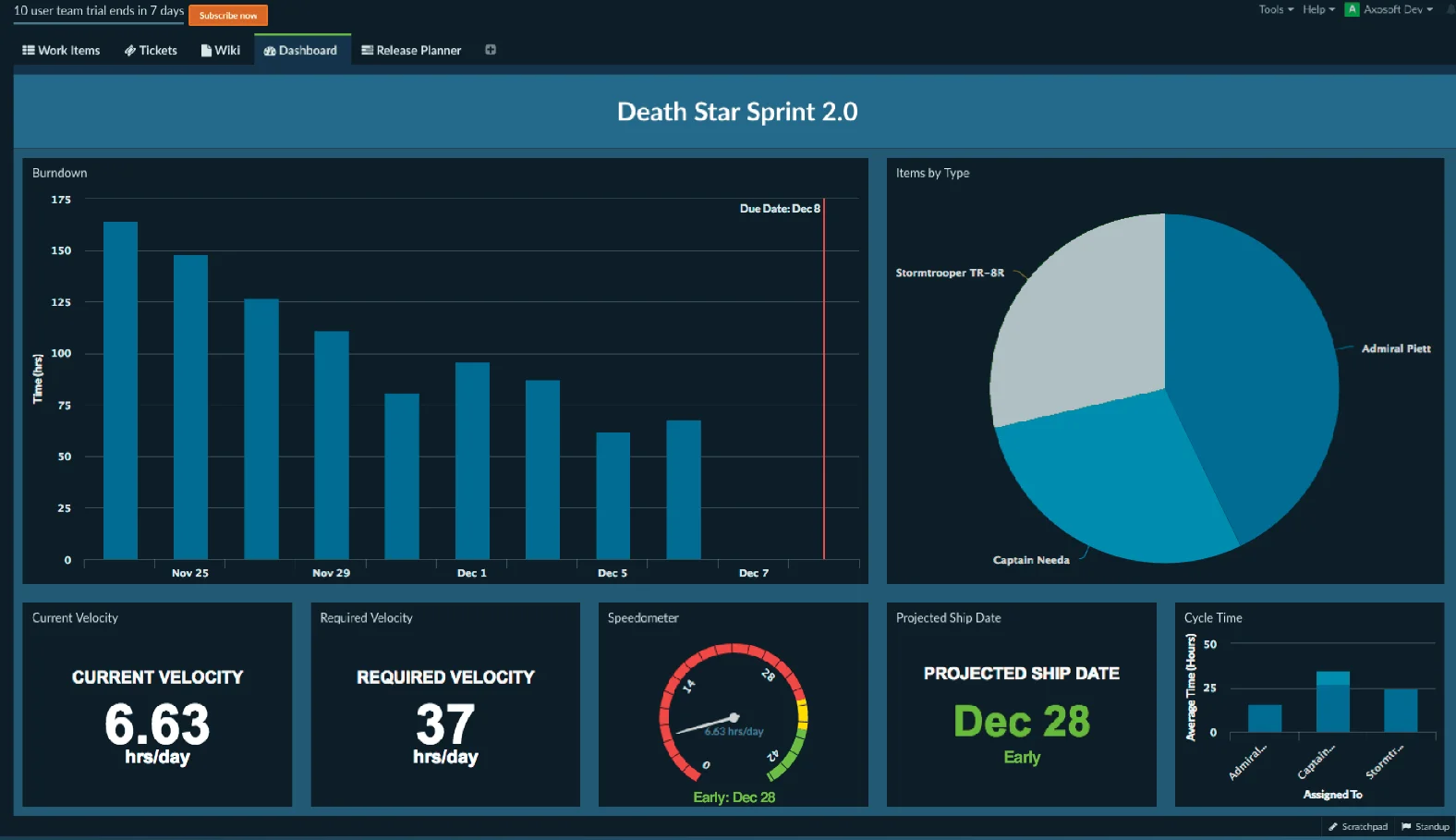
Formerly Axosoft, GitKraken offers a suite of powerful software development tools in a single place. You can use it to plan, track, and release your development project quickly and efficiently. Not only can you stack-rank your priorities, but you can also use story points, minutes, hours, days, and weeks for estimating.
Although it does not have a visual workflow editor like Jira, you can expect drag-and-drop task prioritization, REST APIs, and a dashboard with customizable gadgets. GitKraken can also run in the cloud or a local data center.
The tool also provides item charts, burndowns, and estimated vs. actual work progress charts to help your developers efficiently direct their efforts.
What Next: Reduce Costly Tech Debt At The Source And Build Products With Healthy Margins
Engineers don’t have the luxury of juggling multiple cost tools to align with finance targets. Separate views create cost blindspots, leading to surprise costs, which tend to eat into profit margins.
Yet, most platforms provide comprehensive cost visibility, vital for developing cost-effective solutions and cultivating a cost-aware DevOps culture.
So, we designed CloudZero for engineers like you. Unlike conventional cost tools, which are clunky and inaccurate, CloudZero empowers you to:
- Analyze the people, products, and processes driving your cloud costs on a highly detailed level, including cost per customer, team, feature, project, service, and environment.
- Regardless of the complexity of your environment, you can allocate 100% of your cloud costs in minutes or a few hours.
- View, understand, and optimize costs across AWS, Azure, and GCP in a single source of truth. CloudZero also works across Kubernetes, Snowflake, Datadog, MongoDB, New Relic, Databricks, and more platforms.
- Get industry-leading Kubernetes cost insights by cluster, node, pod, or business concepts such as cost per customer, environment, and service.
- Utilize real-time cost allocation to gain immediate cost insight and avoid surprises.
- Prevent overspending before it happens with hourly cost intelligence – most tools send a single report every 24 hours.
- Receive timely, noise-free, and context-rich cost anomaly alerts right in your Slack or email to fix issues at the source.
- Build cost-effective solutions by aligning engineering with finance and FinOps with our Engineering-Led Optimization approach.
- Get your own Certified FinOps Professional to show you around and offer ongoing cloud cost optimization help so you can hit your goals faster.
You don’t have to take our word for it. Drift has saved over $2.5 million on its AWS bill. CloudZero saves Malwarebytes and Obsidian 6-10 hours weekly managing cloud costs. It’s your turn, too.
